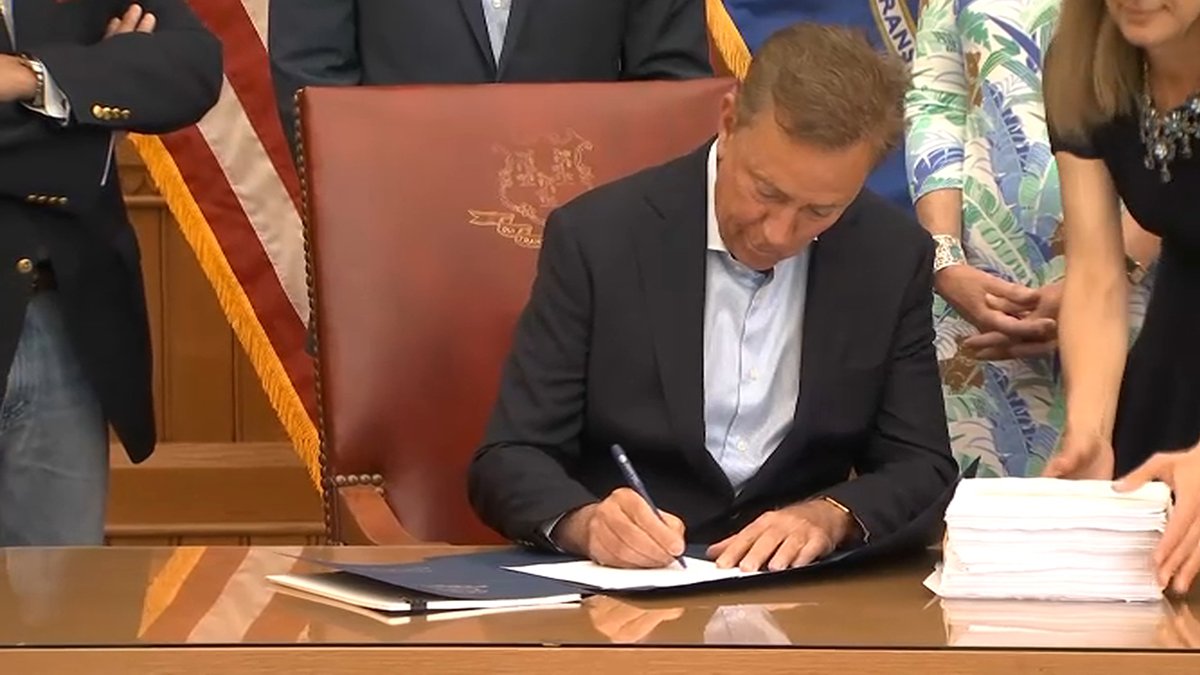July 1, 2021
The Northeast governors have submitted their proposed FY2022 state budgets. Connecticut, Maine and New Hampshire each have biennial budgets (FY22-FY23) also proposed this year. New York’s fiscal year began on April 1 and the other Northeast states all begin their fiscal year on July 1.
To date, New York, Vermont, Connecticut and New Hampshire governors have enacted their FY2022 state budgets. On June 28, the Massachusetts legislature approved an interim spending plan to cover costs through July while negotiators continue debate on a final budget.
Many of the proposed budgets are all built around continued COVID-19 recovery efforts and include federal dollars provided to the states as part of the American Rescue Plan or the CARES Act.
See more highlights on the state budgets below.
Connecticut
On February 10, Governor Lamont released his recommended budget for fiscal years 2022-2023 of $22.6 billion for FY2022 and $23.4 billion for FY2023. On June 23, Governor Lamont signed a two-year $46.3 billion state budget. The budget relies on $2.28 billion over two years in federal COVID-19 relief as part of the American Rescue Plan. The budget makes significant investments in education, healthcare, childcare, workforce development, cities and towns, and nonprofit social service providers while not raising taxes. The budget remains $58 million under the spending cap, even while investing an additional $1 billion toward paying off Connecticut’s unfunded pension debt. Key points in this budget include:
- Invests the most local government aid to towns and cities in state history
- Increases the state Earned Income Tax Credit for working families
- Expands access to quality, affordable healthcare
- Expands access to affordable childcare
- Expands workforce development support
- Supports nonprofit health and human service providers
- Does not include any increases in income tax and sales tax rates
Links: Fiscal Years 2022-2023 Budget Proposal; Budget Address; Governor Lamont signs $46.3 billion budget
Maine
On January 8, Governor Mills released her biennial budget proposal for fiscal years 2022-2023. In a series of largely party-line votes, the Maine Legislature approved a new two-year, $8.3 billion state budget on March 30. The move to push the budget bill through with a simple majority requires the Legislature to adjourn so that the spending plan can go into effect in 90 days, before the fiscal year ends on June 30. The Legislature did adjourn after the majority and minority caucuses of each chamber agreed to come back for a special session on April 28 to work on a supplemental spending plan and unfinished legislation.
On May 12, Governor Mills unveiled her Administration’s Part 2 budget for the biennium, a proposal that makes a historic investment in Maine public schools and meets the State’s obligation to pay 55 percent of the cost of K-12 education for the first time in Maine’s history. Governor Mills says she’d like two-thirds support in the Legislature, which would require votes from Republicans. The updated spending plan is separate from Gov. Mills’ Maine Jobs & Recovery Plan, her blueprint for spending the $1.13 billion in federal American Rescue Plan Act funding. Both spending plans require support from the legislature. Lawmakers reached a bipartisan agreement on a revised $8.5 billion two-year state budget, and approved the spending bill on June 30 by a margin greater than a two-thirds majority, allowing it to go into effect upon the governor’s signature. Governor Mills applauded the legislature and said she looks forward to signing the budget into law in the coming days. Key points in the proposed budget include:
- Investing in Maine Kids and Maine Schools by fully funding education for the first time in Maine’s history
- Improving the Health of Maine People and to further reform MaineCare
- Providing Economic Relief for Low- and Middle-Income Maine People
- Strengthening Maine’s Infrastructure & Partnerships with Municipalities
Links: Fiscal Years 2022-2023 Budget Proposal; Budget Overview; Press Release; State of the Budget; Governor Mills Unveils Part Two Budget Proposal
Massachusetts
On January 27, Governor Charlie Baker released his proposed fiscal year 2022 budget recommending $45.6 billion in spending, a decrease of 0.7% over the Fiscal Year 2021 (FY21) projected spending; however, legislative leaders held off on negotiating a budget because the public health crisis had driven emergency spending, sparked massive layoffs and caused economy uncertainty. Last week, Governor Baker proposed a $5.4 billion interim spending plan to cover costs through July while negotiators continue debate on the final budget. The House and Senate approved Governor Baker’s interim plan on June 28, and the governor signed it hours later.
The budget proposal continues the Administration’s response to the COVID-19 pandemic and addresses critical priorities including promoting economic growth, fully funding the first year of the landmark Student Opportunity Act, and supporting cities and towns across Massachusetts. The spending bill also provides funding for several critical issues, including: health care, education, transportation, housing, workforce development, substance misuse treatment and prevention, behavioral health, the environment, and support for local communities. This balanced proposal does not raise taxes on the Commonwealth’s residents and preserves substantial financial reserves for the future.
Key points in the proposed budget include:
- Continues to support record investments in education including fully funding the first year of the landmark Student Opportunity Act, and significant investments in state-subsidized early childhood education
- Improving the health, safety, and resilience of individuals and families with additional funding for the Department of Public Health in order to ensure access to high-quality public health and health care services
- Invest in veterans throughout the Commonwealth including funding for the Soldiers’ Home in Holyoke and for the Soldiers’ Home in Chelsea
- Protects the state’s Medicaid (MassHealth) program by maintaining all eligibility and benefit levels at pre-COVID-19 pandemic levels
- Supports a broad range of substance misuse prevention and treatment options and recovery
- Increased funding for significant reforms to better protect and care for the Commonwealth’s most vulnerable children
- Investing and supporting individuals with disabilities, and increased access to behavioral health treatment
- Promotes economic development and supports advanced manufacturing and targets new and emerging opportunities through the technology research and development
- Supporting local government, promoting equality and opportunity, and supports promoting equality and opportunity
Links: Fiscal Year 2022 Budget Proposal; Proposal Letter; Governor’s Press Release
New Hampshire
On February 11, Governor Sununu proposed a biennial budget that calls for $6.83 billion in total spending in fiscal year 2022 (a 0.2 percent decline from adjusted fiscal 2021), and $6.96 billion in fiscal year 2023. On June 24, the New Hampshire Legislature passed the two-year state budget that includes not only $13.5 billion in spending but also tax cuts, abortion restrictions, and controversial education programs and policies. The governor signed the budget bill into law on June 25. Key points in this budget include:
- Includes a sweeping school choice program that GOP lawmakers call Education Freedom Accounts. The program would allow parents to use tax dollars to pay for tuition and fees at private and parochial schools, or for costs associated with homeschooling
- The budget tightens oversight of state-funded family planning providers, and anyone seeking an abortion at any time in New Hampshire will need to get an ultrasound prior to the procedure
- Increased funds for mental health including funding allocated for psychiatric facilities, and community mental health care and stabilization
- Funding for The Sununu Center and The Division Of Children, Youth And Families (DCFY)
- Bans teachers in New Hampshire from discussing divisive concepts in the classroom related to racism and sexism
- Governors emergency powers that would require a governor to convene a session of the full Legislature 90 days into a state of emergency
- Lawmakers have prioritized a range of tax cuts including shielding business income derived from the federal Paycheck Protection Program
- Includes funding state aid to cities and towns over the biennium
Links: Fiscal Years 2022-2023 Budget Proposal; Budget Summary; Budget Address; Governor Sununu Statement on the Budget
New York
On January 21, New York Governor Andrew Cuomo released his proposed budget for fiscal 2022 that totals $192.9 billion in all funds spending. The New York State Assembly passed a $212 billion budget bill on April 7 and the governor signed it into law while announcing the FY2022 Enacted Budget to reimagine, rebuild and renew New York in the wake of the ongoing COVID-19 pandemic. Key points in this budget include:
- The Budget supports the Governor’s $311 billion infrastructure plan
- Establishes a first-in-the-nation program to provide affordable internet
- Enhances public safety by authorizing the withholding of up to 50 percent of State and Federal funds from jurisdictions that fail to produce a police reform plan and comply with the Governor’s Executive order
- Directs $2.3 billion in federal child care resources to expand availability, quality and affordability of child care across the state
- Supports $29 billion in public and private green economy investments to create 12,400 megawatts of green energy
- Ensures that New York uses Buy American principles in manufacturing of renewable components
- Ensures access to fair and safe housing and protects renters
- Includes comprehensive nursing home reform legislation
- Enacts small business and arts relief and recovery assistance
- Continues the phase-in of the middle class tax cut
Links: Fiscal Year 2022 Budget Proposal; Briefing Book
Rhode Island
On March 11, Rhode Island Governor Daniel McKee released his proposed fiscal 2022 budget totaling $11.2 billion in all funds, a decrease of 12.3 percent compared to the fiscal 2021 enacted level. On June 24, the RI House passed a $13.1 billion budget where it now moves to the Senate for consideration. The bill currently includes funding for affordable housing initiatives, a 30-percent benefit increase for low-income families, and $15 million for body cameras for police officers. The bill also includes funding for housing and education, while raising no broad-based taxes. The Senate is expected to take up the legislation this week and if approved without changes, it will go to the governor for his signature. Key points in this budget include:
- No tax on the rich
- A dedicated funding stream for housing
- No new tax on soda and other sugary drinks
- The car tax phaseout will continue
- No action on legalizing marijuana
- A new “Pay For Success” program for the homeless
- More money for film tax credits
Links: Fiscal Year 2022 Budget Proposal; Budget Presentation; Governor’s Press Release
Vermont
On January 26, Vermont Governor Phil Scott released his proposed fiscal 2022 budget of $6.83 billion in total funds that represents a 5.7 percent decline from the governor’s recommended adjusted level for fiscal 2021. On June 8, Governor Scott signed a $7.315 billion budget prioritizes growing the economy, including funding small business pandemic relief, community revitalization projects and tourism marketing Career Technical Education programs and centers, adult training and re-training, state colleges, worker relocation grants and more. The budget makes investments in Vermont’s infrastructure and human capital from the federal funds available from the American Rescue Plan Act (ARPA) and the CARES Act (CRF). The budget also funds shared priorities to protect the vulnerable and our natural resources, as well as improve the lives of Vermonters. This includes initiatives to provide permanent housing for the homeless, weatherize more homes, increase access to emergency mental health interventions, and mitigate climate change. Key points in the budget include:
- Historic investments in higher education, workforce, housing, clean water, broadband, technology modernization, climate, and more.
- Investments in our mental health system
- Allocates funds to stabilize state college system with the largest investment in higher education in state history
Links: Fiscal Year 2022 Budget Proposal; Governor Scott signs $7.3 billion budget



